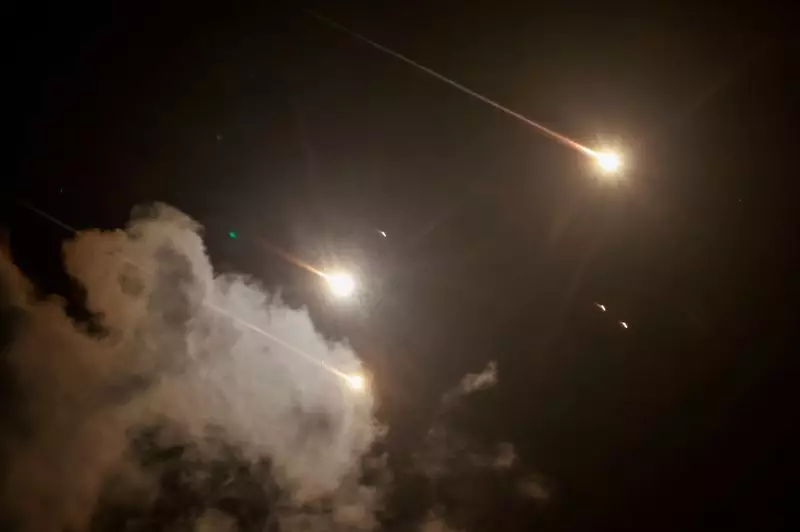The recent missile attack by Iran on Israel has stirred discussions about the implications of missile defense systems, particularly in the context of a potential conflict involving major powers like the United States and China. While the events in the Middle East and the Indo-Pacific region are different in scope and nature, analysts suggest that the Iranian missile strikes can offer important insights into the effectiveness of missile defense systems. The complexities of geopolitical warfare necessitate that nations re-evaluate their defensive strategies, particularly as they pertain to advancing missile technologies.
In a scenario where tensions reach a boiling point, the U.S. military must not merely focus on deterrence through missile defense but also be prepared for retaliation. The nature of deterrent strategies is undergoing a transformation. The idea that robust defensive systems can completely neutralize missile threats may no longer be viable. Instead, the concept of “deterrence by punishment” is gaining traction, suggesting that a credible threat of retaliation may serve as a better deterrent against potential aggressors.
While the Iranian missile campaign has provided a real-world test of missile defenses, it highlights the challenges that lie ahead, particularly in the Indo-Pacific region where the threat perception is markedly different. One key observation is that despite the success of Israel’s multi-layered defense system, including advanced systems like the Iron Dome and Arrow, the scale and sophistication of China’s missile arsenal are far more daunting. China’s missile systems, known for their precision and range, pose a considerable challenge to any defense strategy developed by the U.S. or its allies.
The technology gap and operational strategies between the Iranian and Chinese missile systems are significant. China’s DF-26 and DF-21 missiles, for instance, exhibit longer ranges and varying levels of accuracy that could complicate the American response in the region. The U.S. currently relies on a combination of defense technologies, but experts warn that a quick escalation in a conflict scenario with China could overwhelm these systems. The existing capabilities may not offer the level of assurance necessary to deter a mass attack from a well-coordinated Chinese missile strike.
The Iranian missile strikes provide a unique opportunity for the U.S. and its allies to test and evaluate how defensive technologies perform under real attack scenarios. Unlike the Middle East, where missile threats are often localized, the Indo-Pacific presents a broader array of target areas. This geographical reality adds layers of complexity in both offensive and defensive strategies. With distances in play that complicate traditional response tactics, the U.S. military must deploy more agile, versatile systems capable of operating in a theater where threats are both dispersed and highly advanced.
A key takeaway from the Iranian missile barrages is that the information gleaned about defensive systems’ performance can potentially work to de-escalate tensions. Knowledge about how missile defenses operate can lead offensive nations to reconsider their strategies. However, there exists a risk that the uncertainty surrounding the effectiveness of any given missile defense systems could lead to dangerous miscalculations. If countries misjudge the defensive capabilities of their adversaries, they may be inclined to escalate a conflict more rapidly than expected.
The evolution of international military dynamics demands that nations pivot from a simple defense-centric approach to more nuanced strategies that incorporate retaliatory capabilities. As racial tension escalates in military contexts, there is a growing recognition of the need for integrated air and missile defense systems that can handle large-scale attacks, especially in an environment where vulnerabilities are anticipated.
Additionally, coordination between various missile defense technologies will be crucial. The United States will need to invest in not just standalone systems like THAAD and Aegis but also in a holistic framework that addresses the multi-faceted nature of modern warfare, including cyber capabilities and anti-satellite strikes.
As the stakes rise, analysts project that Western integrated air and missile defenses will face considerable challenges when confronted with large-scale missile assaults from China. The strategic landscape is set for continuous evolution, with reliance on past experiences—such as those from the Iranian scenario—shaping future military posture and readiness in the Indo-Pacific. The need for comprehensive planning, research, and the adaptability of defensive strategies has never been more critical.

